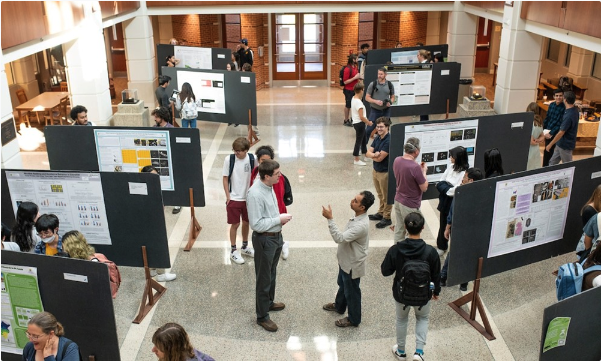Date of Award
5-2024
Document Type
Thesis
First Advisor
Joe Heithaus
Second Advisor
Robert Dewey
Third Advisor
Stevie Baker-Watson
Abstract
I don’t go to every single race, paint my face Ferrari red, or show up at the hotels of drivers like Charles LeClerc and Pato O’Ward in hopes of getting an autograph. However, I do love motorsports and have worked in the motorsports industry as a college program intern in the premium services department at the Indianapolis Motor Speedway (IMS). Before working in the world of motorsports, I expected to nd an industry full of men and a need for masculine energy from any person who wasn’t a man. I had seen stories about and met men who would quiz people, especially women, on their knowledge of something the woman liked or was a fan of in hopes of claiming they were not knowledgeable enough to be a real fan. I figured the same would extend to the people working in the industry, if you didn’t know everything about the sport and the industry, you wouldn’t be seen as cut out for it. While I’m sure there are people in the industry like that, I found myself surrounded by powerful, kind, and intelligent women. The men I worked closely with did not express any views or opinions in line with that kind of personality. Even though, in that regard, I found my job different than I thought it would be, I still saw and heard the stories of women in other places in the industry ghting for more representation, expressing the feeling of being looked down upon and creating programs to build up women in the industry from the ground level. I saw these stories in news outlets, books, and personal social media accounts, but I wanted to explore them differently.
As I examined my options, I considered my love of poetry a possible medium. I found poetry about motorsports—like Sarah Thompson’s "The Road Warrior" (Poetry in Motion) and “The Racer” by John Masefield (Maesfield)—common, with the Indy 500 even naming an official poet for their 100th running (Littlefield). Poetry is used to talk about women and their experiences in poems like “A water woman has no body” by Lisa Ciccarello (Ciccarello) or “Girl Saints” by Emily Skaja (Skaja). However, the poems I found did not address the combination of these ideas by exploring women’s experiences in motorsports. I saw these two circles, never touching, so I set out to bring them together in a Venn Diagram.
Poetry offers something to these stories that a research paper, news article, tweet, or blog post can’t. It oers a continuous work that could be picked up and put down at any point, each poem acting as a distinct story despite the through lines that could be found in the collection. A novel or a work of nonfiction has a sort of continuity that requires the work in its entirety to be consumed for understanding to be reached fully. With poetry, there is no requirement to commit to a whole book or thesis paper, and it offers more room for multiple stories and perspectives than personal social media accounts or news stories.
While poetry collections are better read in their entirety eventually, it is not a necessity. Even reading the poems in order is not necessary for the reader to learn and understand the message, or parts of the message, of the author or curator. Poetry also oers both narrative and lyric storytelling, allowing the focus to shift from telling a story to expressing emotions and feelings in different works. Women’s experiences are diverse but still related, and in that same way, works in a poetry collection are distinct pieces of the same whole.
Recommended Citation
Pedro, Cole '24, "(No) Women On Track: An exploration of women’s experiences in motorsports through poetry" (2024). Honor Scholar Theses. 231, Scholarly and Creative Work from DePauw University.
https://scholarship.depauw.edu/studentresearch/231


